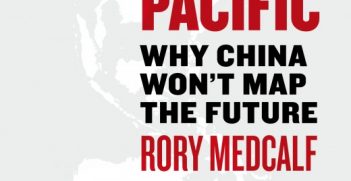Asian Megatrends

With such a commanding title, Asian Megatrends has a lot to deliver. Pleasingly, it does.
Rajiv Biswas is an experienced Asian-based senior economist with IHS Global, a consortium that absorbed the respected Jane’s Group in 2007; Asian Megatrends is written by Biswas in a personal capacity. In this book he writes about the big picture topics that are dominating order and power in the Asian region and with his extensive knowledge casts comparisons and observations that are insightful and refreshing.
The book is arranged into 16 chapters, both thematic and country-focused, and contains 21 easy-to-read tables. Those looking for quick quotes or a checklist may conclude they need to read no further than the listing of megatrends in the introduction, but it would be missing an abundance of insights not to read on. For example, while most of us would be aware of the growing number of Chinese international tourists, few would be aware of the profound impact this is having on Thailand and the Thai economy. Nor would spending on private health care be an obvious candidate for the lay reader as a key driver of rapid future growth in consumer spending in Asia.
Some chapters might be expected, including the impact of ageing demographics, future manufacturing hubs, environmental crises and the role of ASEAN. However, it is particularly pleasing to see a whole chapter devoted to the significant emergence of Asian megacities – defined as those with a population of more than 10 million people. There are 16 such cities currently, with many more set to come over the next 15 years, and such massive urban centres place huge strains on governments and their inhabitants. There is also a refreshingly level-headed analysis of China. Biswas is particularly positive on the outlook for Singapore where its government consistently focuses on retaining its competitive advantage, not least, according to Biswas, due to it simply being a much safer city to live and work in than many others in Asia. Less crime pays off for Singapore.
Biswas also devotes a chapter to the potential catalysts for conflict in Asia and assesses all the usual suspects: the South China Sea, Senkaku/Diaoyu islands, Korean Peninsula, India’s borders etc. He also assesses the lack of conflict management mechanisms in the region and explores a number of options, cautioning against complacency.
Asian Megatrends is a not a pure scholarly work but the eloquence and authority behind the assertions are sound. Biswas avoids alienating his non-economist readership through straightforward explanations of economic phenomena couched in political and social contexts. Where some might consider his first person fireside chat approach to be out of place others might find the hybrid of personal narrative interspersed with facts, figures and analysis a more accessible means of exploring these topics. Asian Megatrends would make an engaging audio book.
A curiosity of this book is that it does not acknowledge its predecessor Future Asia, written by Biswas and published by Palgrave Macmillan in 2013. Asian Megatrends is certainly an update and improvement on Future Asia, with some small inconsistencies redressed, but slabs of text are more than comparable.
Asian Megatrends by Rajiv Biswas is an accessible resource for the international relations and economics student and scholar, the private sector executive and policy-maker alike.
Rajiv Biswas, Asian Megatrends, Palgrave Macmillan, UK, 2016.
Stephanie Koorey is a visiting fellow at the Australian Defence Force Academy (ADFA) at the University of New South Wales (UNSW), Canberra.





